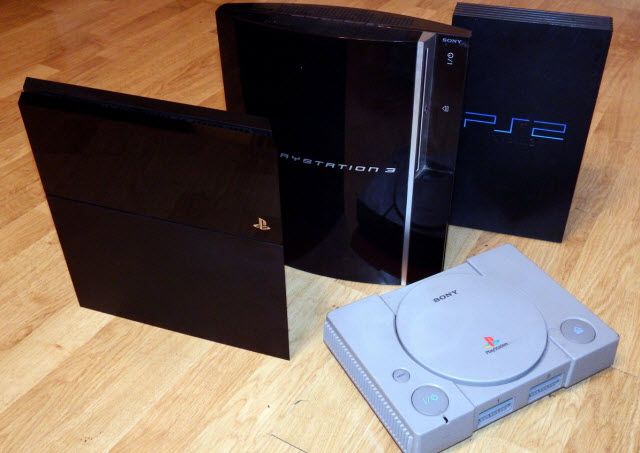
Sony is on top of the video game world right now, with their recently released PlayStation 4 topping sales charts of new generation consoles. They’ve sold 7 million consoles as of a few weeks ago, more than offerings from both Microsoft and Nintendo. As the “4” would indicate, their PlayStation Journey began a long time ago, and has seen its share of ups and downs over the years.
The original PlayStation was first released in 1994 to compete with the Nintendo 64 and Sega Saturn. Though the Saturn shared the PlayStation’s disc-based format, the system was a huge disappointment for the former powerhouse SEGA, and helped contribute to their eventual downfall. Despite being seemingly “less advanced,” clinging to cartridges, the Nintendo 64 was a formidable opponent, and the Sony-Nintendo rivalry continues to this day.
Few realize that the PlayStation was actually born out of Nintendo, with Nintendo hiring Sony to make a “SNES-CD” that would use discs for its next system. Nintendo eventually cancelled the project, but the console lived on and would eventually become the PlayStation. There were legal disputes over this move, but eventually Sony won out, and has been a huge force in the console business ever since.
The PlayStation was the first video game console to ever sell 100 million units worldwide, and few others can claim that honor. It’s successor, the PlayStation 2, remains the highest selling video game console ever made, with 155 million units sold around the world due to a huge catalog of games, a relatively cheap price and general availability. The PS2 far and away gaming’s greatest success story, and it put Sony on top of the world, dwarfing generational rivals like the Gamecube and the original Xbox from Microsoft, once the software giant stepped into the ring.
The PlayStation 3 launch was perhaps Sony’s biggest misstep. They were so confident in the PS2’s success that they assumed that people would pay any amount of money for a follow-up console. That’s why they priced the PS3 at a comically high $600 at launch, which caused the console to sell slowly at first, and allowed Xbox 360 a foothold in the market. And due to how beloved the PS2 was, that fact actually worked against them, as people didn’t want to pay three times as much to upgrade to an entirely new console.
This allowed the Xbox 360 to spring ahead in sales, but the real story of the seventh console generation was the Wii, which became global phenomenon for Nintendo, the likes of which they hadn’t seen since the SNES. Its motion controls made the console a must-have purchase across gamers and non-gamers alike, and as a result, the Wii easily “won” the console generation.
But the PS3 was far from all doom and gloom for Sony. During its long life cycle, the system gained popularity after it dropped its price and amassed a fantastic collection of games. Today, the PS3 has surpassed the Xbox 360 in terms of worldwide sales, though it should be noted that in North America, the 360 has outsold the PS3 nearly 2 to 1.
Finally, we arrived at the PS4, which was launched alongside the Xbox One last year, with Nintendo’s Wii U debuting a year earlier. Despite only being out for less than a year, the PS4 is already outselling the Wii U, and has 7 million units sold to customers compared to Microsoft’s 5 million sold to retailers. It’s still early in the race, but Sony has found themselves a strong position for the PS4.
Microsoft mostly has themselves to blame for their shortcomings when trying to compete with Sony recently. Their decision to package the Xbox One with a largely useless Kinect, increasing the price a full $100, was a big factor in the sales disparity. The PS4 has also launched in more regions, and is thought of to have just a touch more power than the One. Not much, but enough where it makes a difference to consumers.
Sony’s future plans for the PS4 include integration of Project Morpheus, their VR headset, though the details on when that might make it to market have been sketchy at best. Some are saying this may be the last true console generation as technology continues to evolve and combine, but so far, Sony’s winning, and they have a record of doing so going back twenty years.
[Photo via Sony]
